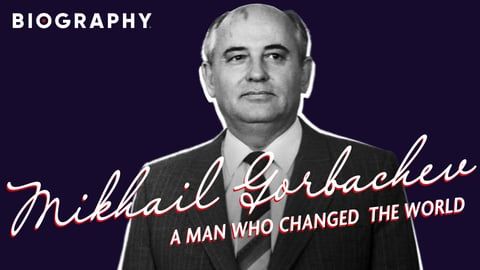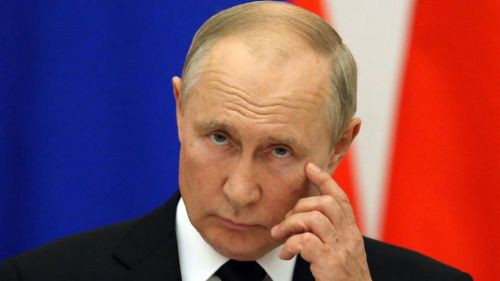Dissolution of Soviet Union - 1988 - 1991. A nuclear threat by Russia in 2022.A Chapter by JessyJacobWhy Russia is going to wage a war with Ukraine - 2022 Feb! A quick recap of the history of Soviet Union.The Soviet Union was supposed to be “a society of true democracy,” but in many ways it was no less repressive than the czarist autocracy that preceded it. It was ruled by a single party�"the Communist Party�"that demanded the allegiance of every Russian citizen. After 1924, when the dictator Joseph Stalin came to power, the state exercised totalitarian control over the economy, administering all industrial activity and establishing collective farms. It also controlled every aspect of political and social life. People who argued against Stalin’s policies were arrested and sent to labor camps known as gulags or executed. After Stalin’s death in 1953, Soviet leaders denounced his brutal policies but maintained the Communist Party’s power. They focused in particular on the Cold War with Western powers, engaging in a costly and destructive “arms race” with the United States while exercising military force to suppress anticommunism and extend its hegemony in Eastern Europe.Micahael Gorbachav was ruling Soviet union, wanted to put an end to the Cold War and to the arms race, as well as to the mad militarization of the country, which has crippled our economy, public attitudes and morals.  In 1988, Time magazine selected Mikhail Gorbachev to be its “Man of the Year” for his work toward ending the Cold War. The next year, it named him its “Man of the Decade.” In 1990, Gorbachev won the Nobel Peace Prize. In March 1985, a longtime Communist Party politician Mikhail Gorbachev assumed the leadership of the USSR. He inherited a stagnant economy and a political structure that made reform all but impossible. Gorbachev introduced two sets of policies that he hoped would help the USSR become a more prosperous, productive nation. The first of these was known as glasnost, or political openness. Glasnost eliminated traces of Stalinist repression, like the banning of books and the omnipresent secret police, and gave new freedoms to Soviet citizens. Political prisoners were released. Newspapers could print criticisms of the government. For the first time, parties other than the Communist Party could participate in elections. The second set of reforms was known as perestroika, or economic restructuring. The best way to revive the Soviet economy, Gorbachev thought, was to loosen the government’s grip on it. He believed that private initiative would lead to innovation, so individuals and cooperatives were allowed to own businesses for the first time since the 1920s. Workers were given the right to strike for better wages and conditions. Gorbachev also encouraged foreign investment in Soviet enterprises. Gorbachev believed that a better Soviet economy depended on better relationships with the rest of the world, especially the United States. Even as President Ronald Reagan called the U.S.S.R. the “Evil Empire” and launched a massive military buildup, Gorbachev vowed to bow out of the arms race. He announced that he would withdraw Soviet troops from Afghanistan, where they had been fighting a war since 1979, and he reduced the Soviet military presence in the Warsaw Pact nations of Eastern Europe. This policy of nonintervention had important consequences for the Soviet Union�"but first, it caused the Eastern European alliances to, as Gorbachev put it, “crumble like a dry saltine cracker in just a few months.” The first revolution of 1989 took place in Poland, where the non-Communist trade unionists in the Solidarity movement bargained with the Communist government for freer elections in which they enjoyed great success. This, in turn, sparked peaceful revolutions across Eastern Europe. The Berlin Wall fell in November; that same month, the “velvet revolution” in Czechoslovakia overthrew that country’s Communist government. (In December, however, violence reigned: A firing squad executed Romania’s Communist dictator, Nicolae Ceaucescu, and his wife.) The Soviet Union Collapses This atmosphere of possibility soon enveloped the Soviet Union itself. Frustration with the bad economy combined with Gorbachev’s hands-off approach to Soviet satellites, inspiring independence movements in the republics on the U.S.S.R.’s fringes. One by one, the Baltic states (Estonia, Lithuania and Latvia) declared their independence from Moscow. On August 18, 1991, concerned members of the Communist party in the military and government placed Gorbachev under house arrest. The official reason given for his imprisonment was his “inability for health reasons” to lead as president, though the public knew better. Leaders of the coup declared a state of emergency. ( A coup was planned by USA and Yelstin against Gorbachav and they got succeeded). The military moved on Moscow, but their tanks were met with human chains and citizens building barricades to protect Russian Parliament. Boris Yelstin, then the chair of parliament, stood on top of one of those tanks to rally the surrounding crowds. The coup failed after three days. On December 8, a newly-free Gorbachev traveled to Minsk, where he met with leaders of the Republic of Belarus and Ukraine, signing an agreement that broke the two countries away from the U.S.S.R to create the Commonwealth of Independent States. The agreement read, in part, “The Soviet Union as a subject of international and geopolitical reality no longer exists.” Just weeks later, Belarus and Ukraine were followed by eight of the nine remaining republics, who declared their independence from the U.S.S.R. after a meeting in Alma-Ata, in today’s Kazakhstan. (Georgia joined two years later.) Back in the Moscow, Gorbachev’s star was falling while another politician was rising: Boris Yelstin, the man who had stood atop that tank before parliament, now had control of both parliament and the KGB. Gorbachev’s resignation as president was inevitable, and on Christmas Day, 1991, he gave up his office, saying, “We’re now living in a new world. An end has been put to the Cold War and to the arms race, as well as to the mad militarization of the country, which has crippled our economy, public attitudes and morals.” The mighty Soviet Union had fallen. Current Situation: In 2014, Russia occupiedCrimea(under the presidency of VLadimir Putin), and declared part of Russia, which is part of Ukraine. This is "the first time since the Second World War that a country has annexed a territory belonging to another country." Ukariane is anticipating a threat from Russia, so it wanted to join NATO for its protection. USA was supporting Ukraine for its protection. Russia is threating a nuclear war against Ukraine if it joins NATO, but why? Is it afraid of NATO on its borders. NATO will not wage war against Russia. Russia should stop this nuclear threat which is going to hurt humans. © 2023 JessyJacob |
Stats
51 Views
1 Review Added on February 20, 2022 Last Updated on February 16, 2023 AuthorJessyJacobAboutA dressed up bride waiting for her man in wedded dress but world will see where that when that wedding happens as she doesn’t know for herself too so she married gets married every day in temple.. more..Writing
|


 Flag Writing
Flag Writing